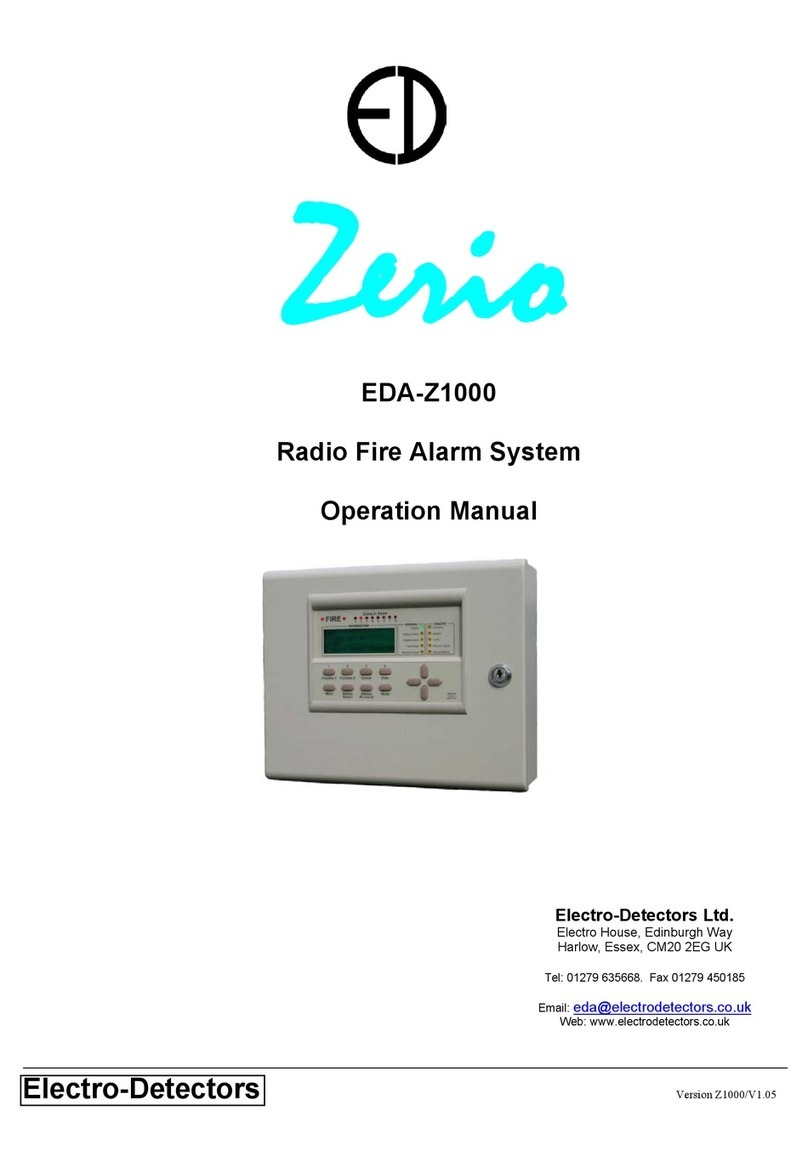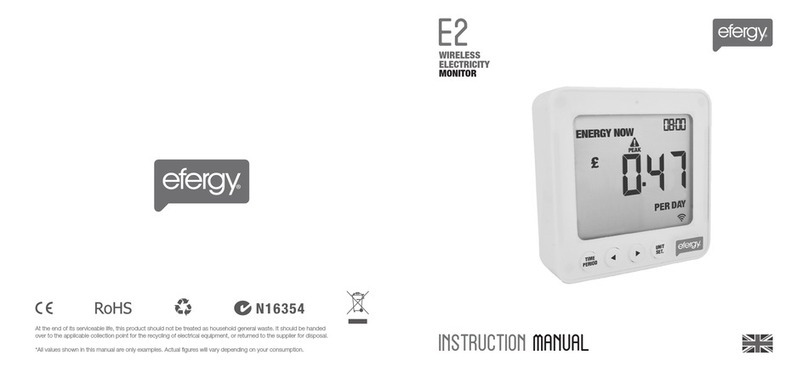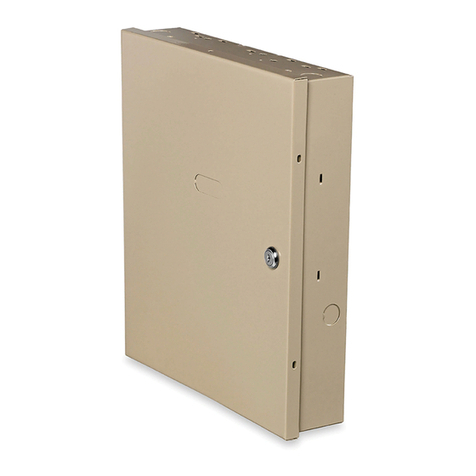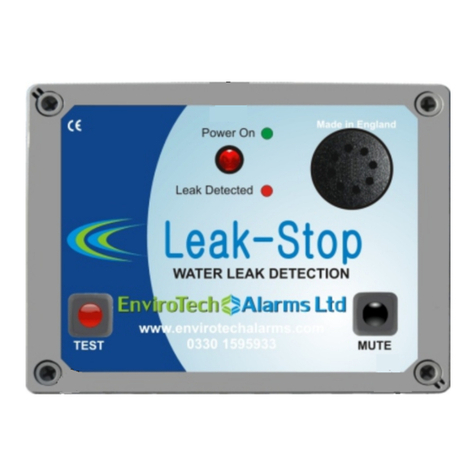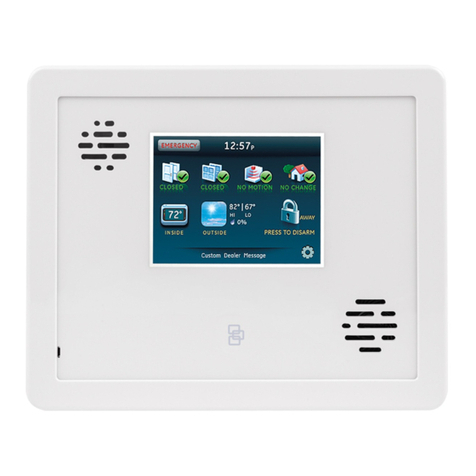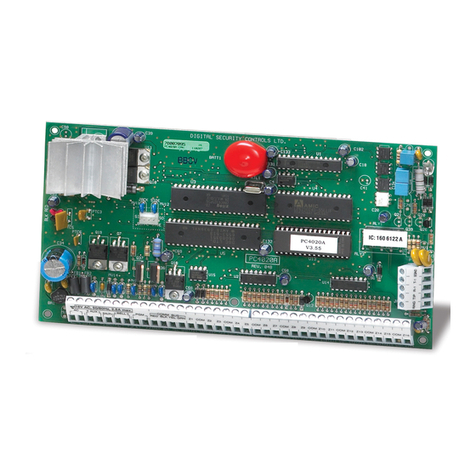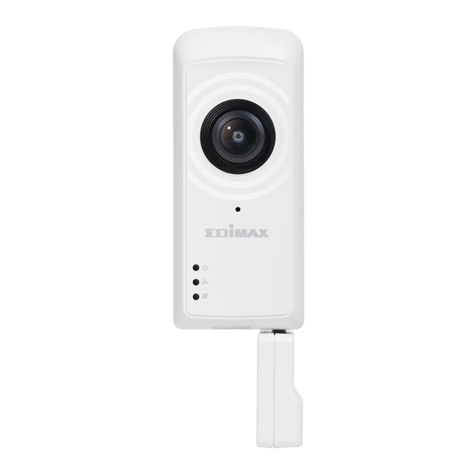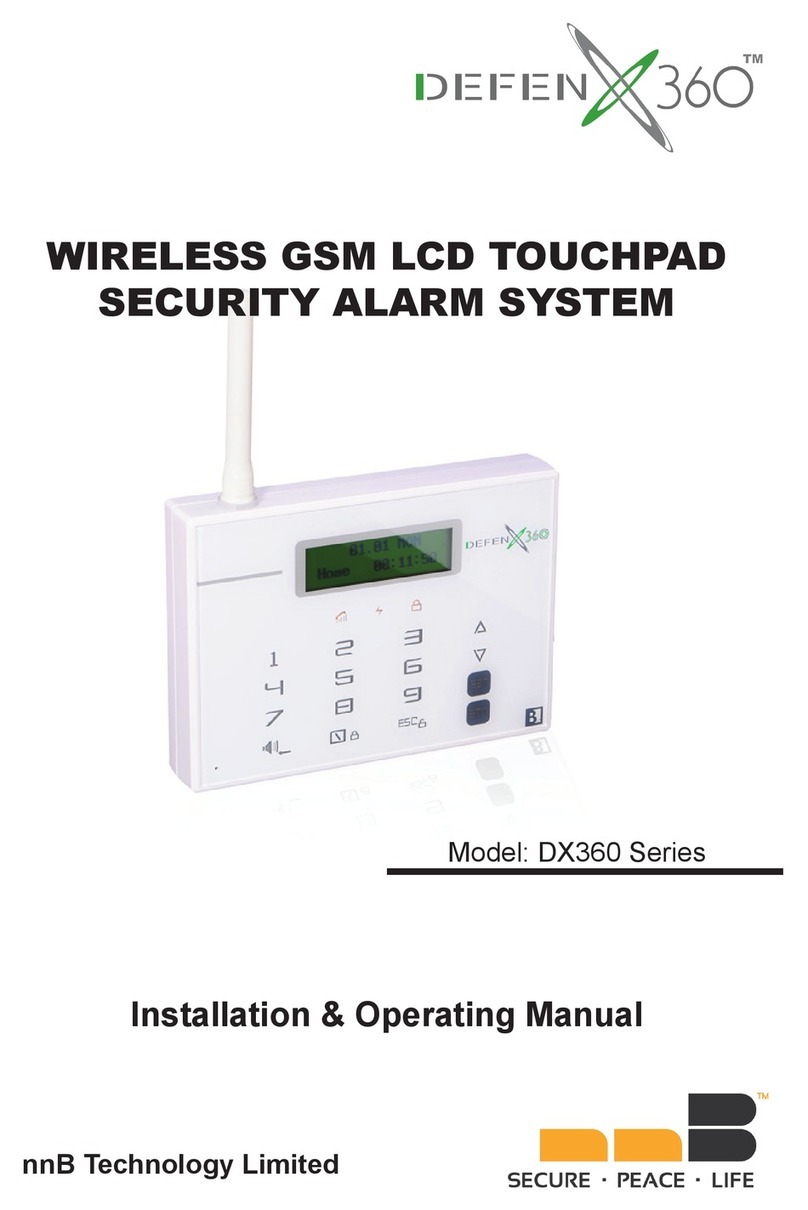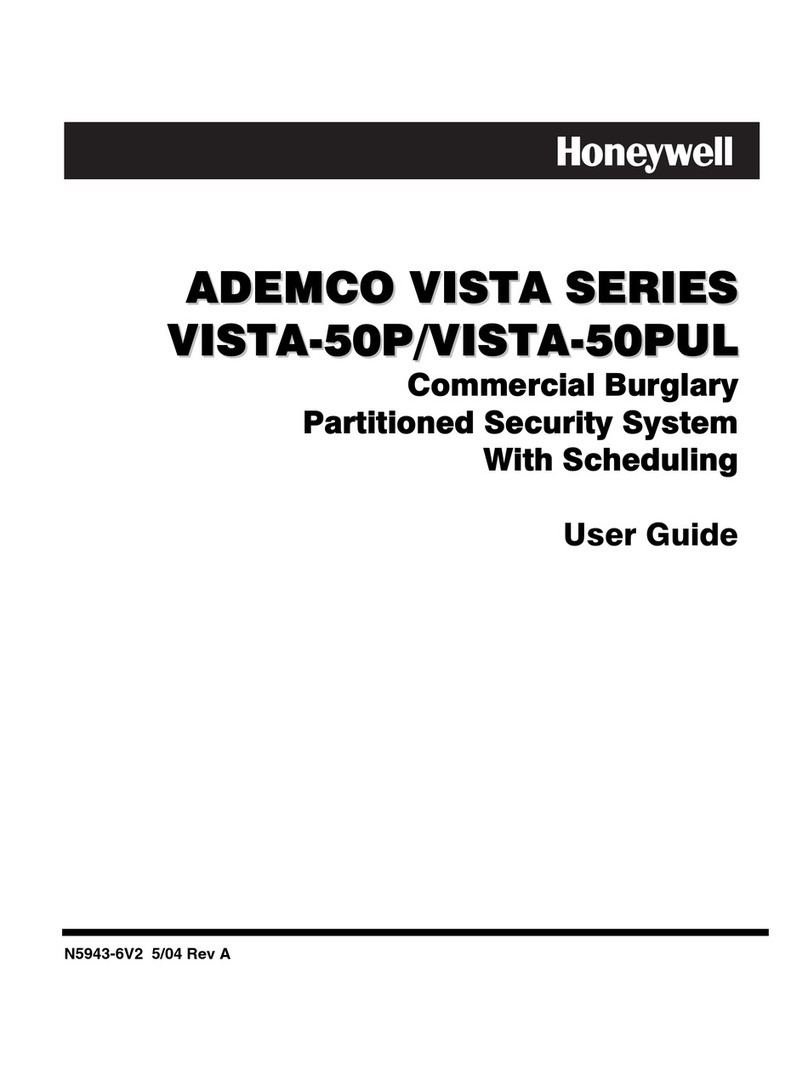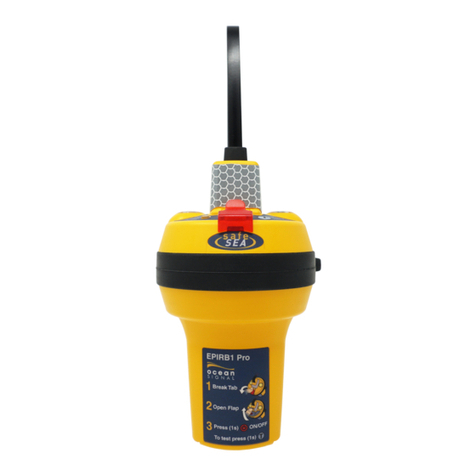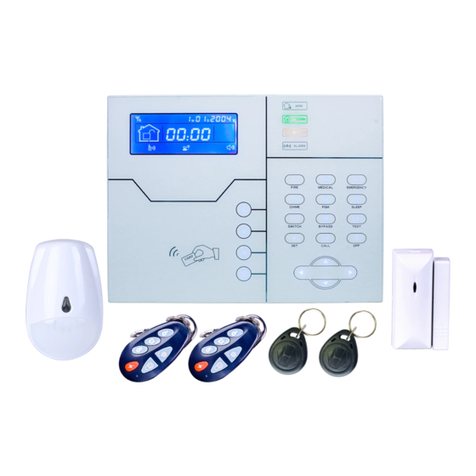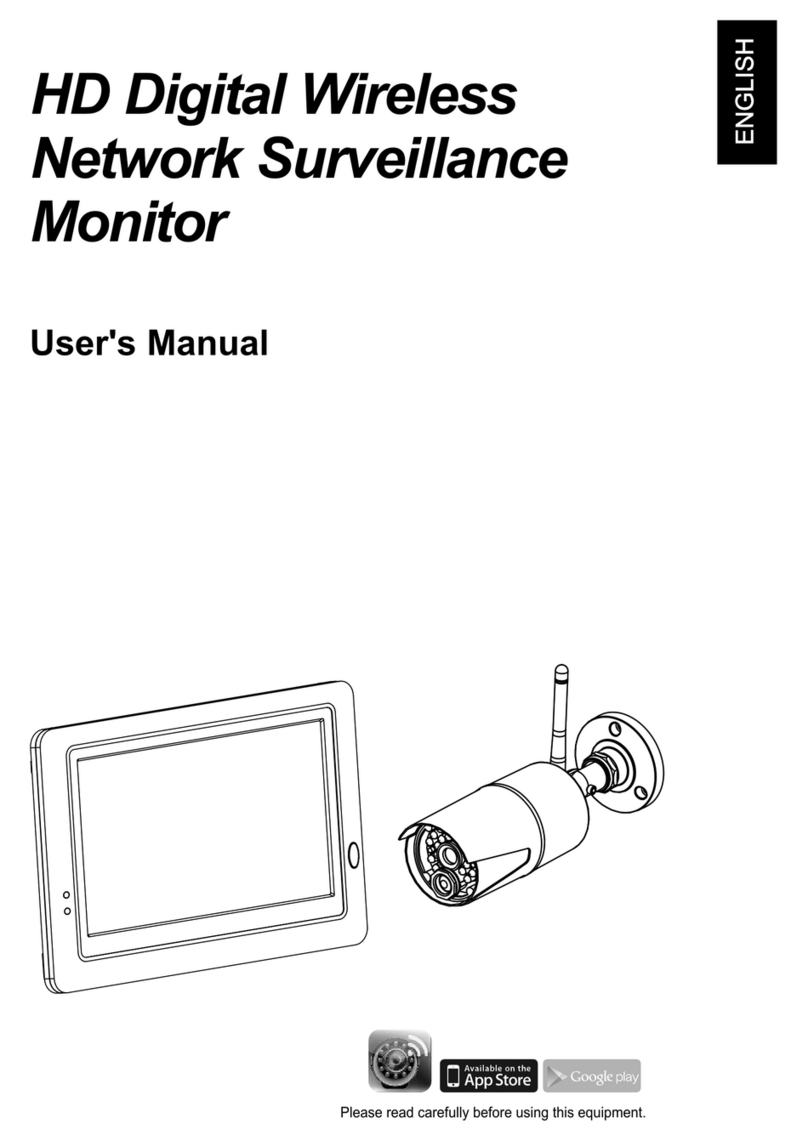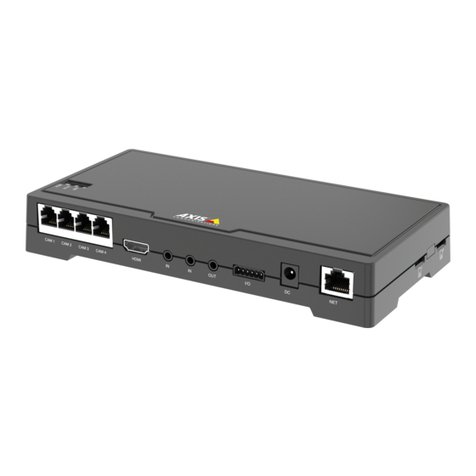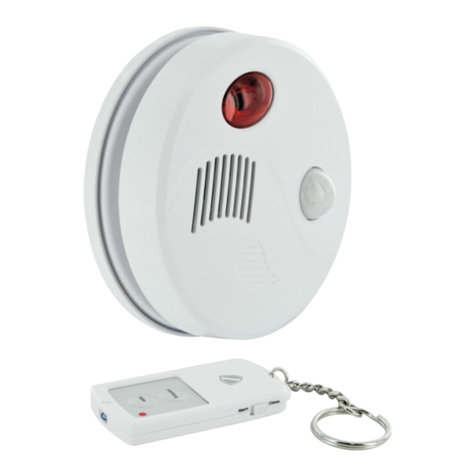Electro Detectors Zerio Plus EDA-T6080 User manual

EDA-T6080 Installation Manual Ref:EDA_T6080_Install_V103
Electro-Detectors
Zerio Plus
EDA-T6080 Radio Input / Output Unit Installation Manual
The EDA-T6080 Radio Input / Output unit is used as part of the Zerio Plus Radio Fire Alarm System to
integrate other equipment with the system. It cannot be used with other ranges of Electro-Detectors
products.
To fix the unit to the wall
The unit should be fitted in an appropriate position close to equipment that it is being interfaced to. The cable
length should be kept to a minimum and should be less than 3m. Care should be taken to try and reduce the
possibility of the unit been accidentally knocked. It is recommended that a fire rated single cable with multiple
cores is used to connect the interfacing equipment with a maximum diameter of 10.5mm. A suitable 20mm
cable gland should be used with a 20mm hole drilled out of back box. The best position for the cable entry is
in the middle underside of the back box. The unit should be separated from the back box by removing the
screw on the underside and pulling apart. This will reveal two screws that attach the back box and should
also be unscrewed. Inside the back box are the wiring connections for the interface. The back box should be
screwed to a flat surface using 2 x No 8 (4mm) screws of appropriate length for the material that the unit is
being mounted on. It is recommended that the back box should be used as a template for the screw holes. If
the surface is not flat, the unit may buckle when screwed tightly to the surface. It is recommended that the
units not be secured too tightly or a mounting plate be fixed to the wall first. The unit should be fitted away
from any metal objects and a radio survey for the position should have been carried out prior to installation.
Before the unit will operate on a system, it must be programmed via the control panel. To program the unit
the panel must be set in the appropriate mode to add a device to the system. Please refer to the panel
manual for further information. Before adding the device to the system you will need to determine what unit
number/address the unit is to be programmed to. The unit uses 3 consecutive addresses on the system, the
first being the physical unit, and the next two being input 1 and input 2. The zone number and text location
information should also be to hand but this can be added/changed later.
0359
Electro Detectors Ltd.
Electro House
Edinburgh Way
Harlow, Essex
CM20 2EG, UK
EN54-18:2005
EN54-25:2008
0359-CPR-00233 (2013)
DOP_EDA_T6080
EDA-T6080
Radio input / output
interface for fire detection
and fire alarm systems for
buildings.

EDA-T6080 Installation Manual Ref:EDA_T6080_Install_V103
Electro-Detectors
To put the unit into log mode, follow the procedure below:-
1. Remove the back box by removing the screw on the bottom of the unit.
2. Ensure the power jumper is removed.
3. Press and hold the unit removal and the log-on button simultaneously.
4. With these buttons pressed down, fit the power link.
5. Hold the buttons down until three rapid beeps are heard. If the mode is successfully selected the LED
on the front of the unit will glow green.
6. Both buttons can now be released.
7. Follow the instructions inside the panel manual to add the device to the system.
Inputs
The unit has two monitored inputs. An alarm load of 470is required to trigger the device into alarm. Once
the unit detects the alarm, its LED will illuminate red and the unit will beep. It will continue to beep whilst the
unit is in alarm but the LED will not be extinguished until the panel is reset. There will be a delay of up to 10
seconds before the panel displays the alarm condition. This can be reduced by adjusting the alarm verify
setting (Refer to the control panel manual for programming). A 4K7End of Line resistor is also required to
monitor the interface connections. A short circuit or open circuit condition will cause the unit to transmit a
wiring fault to the control panel. This is indicated on the unit by the LED flashing red once a second. This will
usually be reported within 2 seconds. An example connection is shown on the following page.
Relay
In order to operate / switch other equipment when the system is in an alarm condition, the unit has a set of
volt free relay contacts. It should be noted that the relay will only operate having received an appropriate
message from the control panel. If selecting test mode operations on the panel it is possible to cause the
relay not to operate during tests if required. The unit can be programmed at the control panel for various
operations as listed below. These options are set when programming the control panel.
Energise Coil in alarm condition and de-energise when control panel Silence Alarm pressed
Energise Coil in alarm condition and de-energise when control panel Reset pressed
De-energise Coil in alarm and energise when control panel Silence Alarm pressed (failsafe)
De-energise Coil in alarm and energise when control panel Reset pressed (failsafe)
The unit requires a 6-40V power supply connected to allow the relay to operate. If this is not fitted the unit will
appear to operate but the relay will not energise.
Mosfet
Where it is not possible to install a PSU, with careful design a Open Drain Mosfet configuration can be used
to switch third party equipment. When the unit receives an alarm transmission from the control panel the
Mosfet switches to ground. When connecting equipment, it must be ensured that the positive side of the
circuit is connected to NO. If this is in-correct it is likely that the equipment will be permanently powered.

EDA-T6080 Installation Manual Ref:EDA_T6080_Install_V103
Electro-Detectors
When the system is operating in the test mode, depending on the settings, the relay and mosfet operation will
not operate, however the inputs will still remain enabled.
When in an alarm or fault condition, the unit can be reset by holding a magnetic test key by the LED on the
right hand side for approximately one second. This is not necessary, as the panel will send a reset message
to the device once the system is reset. This will cause the unit to re-boot with a sequence of beeps. If the unit
remains in alarm or fault then the unit will operate as usual. Resetting the unit in this way has no effect on the
panel. Any status information on the panel will remain until the panel is reset.
In1+
In1-
In2+
In2-
B+
NO
C
EOL
EOL
C
NO
NC
6-40V+
0v
POWER RELAY MOSFET INPUTS
4K7
EOL
470
Alarm
Ω4K7
EOL
470
Alarm
Ω
LOAD
PSU In standard mode the relay will energise
in an alarm condition. If the failsafe mode
is selected then the NC connection should
be connected.
LOAD
PSU
If the Mosfet option is being used then
the Mosfet will short across the terminals
in an alarm condition. This set up
is polarity conscious.
+-

EDA-T6080 Installation Manual Ref:EDA_T6080_Install_V103
Electro-Detectors
To change the battery in the unit:- replacement part: 1 x EDA-Q690
The battery should last approximately 2-3 years in the unit. Always use batteries supplied by Electro Detectors
otherwise this will invalidate the certification. Many similar battery technologies are available but only the ones that
meet certain properties can be used with these units. The battery pack is fitted with 2xAA Lithium Thynol Chloride
cells. Min voltage 3.0V, Max 3.7V. When the battery is approaching its end of life the unit will transmit a low battery
condition, which will be indicated on the control panel. The system will still function for at least a further 60 days in
this condition before the unit fails to work. Once the batteries are too flat to operate, the unit will either indicate a
“verify fail” fault, because the panel has lost communication with the device, or a battery fault will be displayed.
Should either of these be witnessed, the batteries should be changed immediately. If the unit detects a fault with the
battery a ‘battery fault’ will be indicated on the panel. Therefore:-
1. Remove the back box.
2. Remove the power link.
3. Remove the old battery pack.
4. Fit the new battery pack making sure the battery’s pins are lined up and pressed down.
5. Press and hold the unit removal and log-on button simultaneously.
6. With these buttons pressed down, fit the power link.
7. Let the unit go into its log-on mode (ie three rapid beeps) and keep the buttons pressed down.
8. After a further five seconds a series of beeps will sound, at this point release the buttons. This will re-
set the battery counter.
9. Refit the device onto its back box.
Faults displayed on the control panel from devices:-
Low Battery: The batteries are approaching their end of life. The unit will continue to operate for a
further 60 days before the batteries need to be changed.
Verify Fail: The panel has lost communication with the device, this could be caused by the batteries
being flat, the unit failing to operate, something obstructing the radio signal path or the device not being
installed correctly with an adequate signal strength.
Battery Fault: The unit has detected a problem with the battery.
Unit Removal: If the unit is removed from its back box, the panel will display a unit removal/tamper fault.
Open Circuit: If the monitored inputs are measuring a resistance of >10Kthen the panel will display an
input open circuit fault. The format for the fault is Zn xxx I/P OC INPUT UNIT yyy
Where xxx is the zone number and yyy is the unit address
Short Circuit: If the monitored inputs are measuring a resistance of <100then the panel will display an
input short circuit. The format for the fault is Zn xxx I/P SC INPUT UNIT yyy
Where xxx is the zone number and yyy is the unit address
Table of contents
Other Electro Detectors Security System manuals

